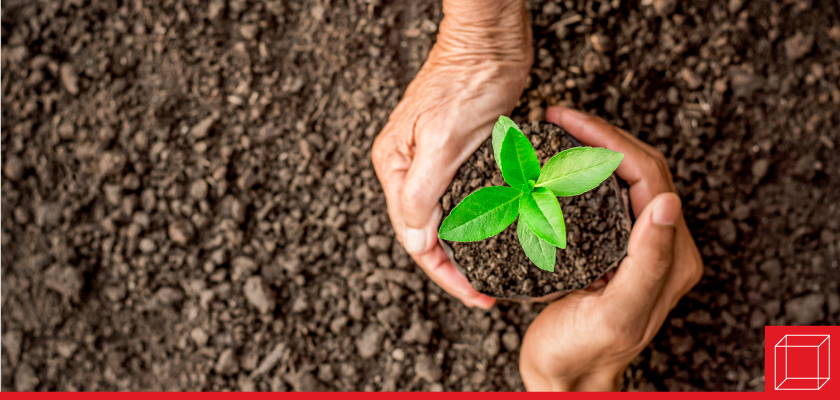Spending Time in Nature: A Prevention Strategy for Burnout
Burnout is an ongoing problem, so it is not the same as just being tired; it cannot be easily cured with a good night’s sleep or a one-time vacation.
By: Réka Anna Lassu, Charisma Greenfield, Hannah Schendel
Employees across the globe are burning out from work. Gallup’s State of the Global Workplace: 2022 Report shows that 44% of employees worldwide report experiencing daily worry, which can lead to burnout.1 Exhaustion, feelings of negativity and cynicism about the job, and lessened professional effectiveness characterize burnout, a syndrome that results from one’s inability to successfully manage chronic workplace stress.2 Burnout is an ongoing problem, so it is not the same as just being tired; it cannot be easily cured with a good night’s sleep or a one-time vacation!
Burnout is linked to negative workplace outcomes
Burnout is linked to negative consequences for individual well-being as well as for the workplace. Employees who are burned out feel less satisfied with their jobs.3 Higher job satisfaction is linked to higher performance, so those who are not satisfied with their job are less likely to be high performers.4 Moreover, burned-out employees are less committed to their organizations.5 When employees are not committed, they may miss more workdays or even if they do come to work, put in less effort. Burned-out employees are also more likely to want to quit their jobs. Turnover costs companies anywhere from one-half to two times the employee’s salary! Just in the United States, the estimated cost of voluntary (i.e., preventable) employee turnover was $1 trillion in 2017!6
Nature’s positive impact on employees
Because burnout has such adverse impacts on organizations, some executive leaders have recognized the need to prevent it with a focus on employee health and wellbeing. Many ways for improving employee well-being exist, ranging from physical exercise to psychological therapy and even workplace well-being interventions.
Exciting, new research has explored the impact of spending time in nature on employee wellbeing. Prior work shows nature can influence employees via the physical design of the workplace (e.g., plants in the workplace) or the integration of nature and work (e.g., completing tasks outdoors).7 However, recent research investigated how time spent in nature outside of the workplace impacts employees. Researchers extended stress recovery theory (i.e., when individuals spend time in nature, they can experience positive affect and recover8) and attention restoration theory (when individuals spend time in nature, they are restored because nature-time does not require directed attention that can often be depleting9). The study found that employees who feel highly connected to nature (as opposed to those who have a low nature connectedness) and spent time in nature in the evening after work, started the following workday feeling a more positive effect. These employees also exerted more effort in their tasks.10 This is interesting because the study shows that for some people, experiencing nature can have a lasting effect well into the following workday!
Experiencing “awe” while in nature
One fascinating phenomenon that can happen while an employee spends time in nature is “awe,” a powerful emotion, which can expand the sense of the world by helping the person experience perceptual vastness and an altered understanding.11 People most commonly experience awe in nature or from others, for example, when watching a beautiful sunset or seeing a stranger help someone in need.
Awe can have profoundly positive physiological, psychological, and social impacts. A Greater Good Science Center whitepaper summarizes numerous studies that have found the impacts of awe to include decreased inflammation, increased feelings of connectedness, feelings of increased time availability, more life satisfaction, and increased positive mood.12
Nature: a prevention strategy for burnout
Prior work already demonstrates that even a 20-minute “nature prescription” can lower stress and have advantageous impacts.13 If indeed time spent in nature is coupled with an experience of awe, it stands to reason employees would reap the rewards. As a prevention strategy, time in nature may be used to build resilience and accumulate “resources14” that can later be used when needed. By building a habit of self-care, employees can be proactive in lowering daily stress, which helps in avoiding burnout. Being proactive to prevent burnout is key and experiencing awe while in nature may help.
How to take action - ideas for nature immersion
If you want to experience the positive impact of nature, try the following:
1. Walk a pet in a nearby park (if you don’t have a pet, use the app Rover to walk others’ pets)
2. Go outside for a picnic lunch (savor your food and observe the scenery)
3. Watch the sunset/sunrise and meditate (try the app Calm)
4. Hike a new trail (use the app All Trails)
5. Rent a bike (try Lime Bikes) for a ride along the beach

Endnotes
Gallup (2022)
WHO (2019)
Cole et al. (2012)
Petty et al. (1984)
Cole et al. (2012)
McFeely & Wigert (2019)
Klotz & Bolino (2021)
Ulrich (1983)
Kaplan (1995)
Klotz et al. (2022)
Keltner & Haidt (2003)
Allen (2018)
Hunter et al. (2019)
Hobfoll (1989)
References
Allen, S. (2018). The science of awe. Greater Good Science Center. Retrieved from: https://ggsc.berkeley.edu/images/uploads/GGSC-JTF_White_Paper-Awe_FINAL.pdf
Cole, M. S., Walter, F., Bedeian, A. G., & O’Boyle, E. H. (2012). Job burnout and employee engagement: A meta-analytic examination of construct proliferation. Journal of Management, 38(5), 1550-1581.
Gallup (2022). State of the global workplace: 2022 report. Gallup. Retrieved from: https://www.gallup.com/workplace/349484/state-of-the-global-workplace-2022-report.aspx
Hobfoll, S. E. (1989). Conservation of resources: A new attempt at conceptualizing stress. American Psychologist, 44: 513-524.
Hunter, M. R., Gillespie, B. W., & Chen, S. Y. P. (2019). Urban nature experiences reduce stress in the context of daily life based on salivary biomarkers. Frontiers in Psychology, 722.
Kaplan, S. (1995). The restorative benefits of nature: Toward an integrative framework. Journal of Environmental Psychology, 15: 169–182.
Keltner, D., & Haidt, J. (2003). Approaching awe, a moral, spiritual, and aesthetic emotion. Cognition and Emotion, 17(2), 297-314.
Klotz, A. C., & Bolino, M. C. (2021). Bringing the great outdoors into the workplace: The energizing effect of biophilic work design. Academy of Management Review, 46(2), 231-251.
Klotz, A. C., McClean, S. T., Yim, J., Koopman, J., & Tang, P. M. (2022). Getting outdoors after the workday: The affective and cognitive effects of evening nature contact. Journal of Management, 01492063221106430.
McFeely, S. & Wigert, B. (2019). This fixable problem costs U.S. businesses $1 trillion. Gallup. Retrieved from: https://www.gallup.com/workplace/247391/fixable-problem-costs-businesses-trillion.aspx
Petty, M. M., McGee, G. W., & Cavender, J. W. (1984). A meta-analysis of the relationships between individual job satisfaction and individual performance. Academy of Management Review, 9(4), 712-721.
Ulrich, R. S. (1983). Aesthetic and affective response to natural environment. In I. Altman & J. F. Wohlwill (Eds.), Behavior and the Natural Environment: 85-125. New York, NY: Springer.
WHO (2019). “Burn-out an "occupational phenomenon": International classification of diseases.” Retrieved from: https://www.who.int/news/item/28-05-2019-burn-out-an-occupational-phenomenon-international-classification-of-diseases
Author Bios
Réka Anna Lassu is an Assistant Professor of Organizational Behavior at Pepperdine University. She researches employee wellbeing and leadership. Réka earned her Ph.D. at the University of Central Florida. Visit www.rekaannalassu.com for more info.
Charisma Greenfield & Hannah Schendel are Research Assistants in the Business Administration Division of Seaver College – Pepperdine University. They are Business Administration majors passionate about workplace wellbeing research.

